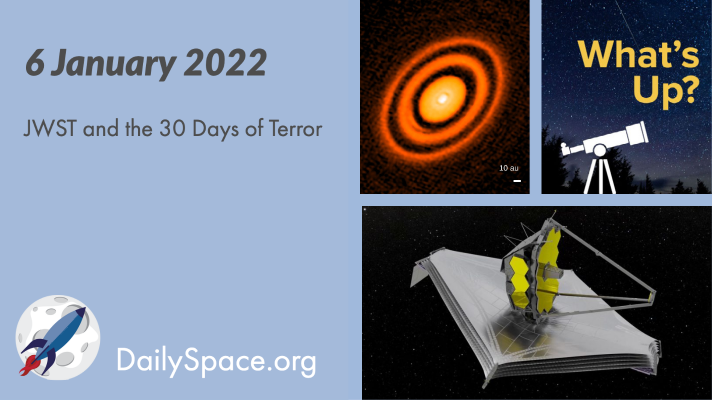
Jan 7, 2022 | Cassini, Daily Space, Earth, Globular Cluster, JWST, Our Solar System, Physics, Saturn, Sky Watching, Stars, Supernovae
With the successful launch of the JWST, the focus turns to the complicated process of unfurling the sunshield and unfolding the mirror. We’ll look at just where NASA is in the process and how much farther we have to go before first light. Plus, Earth and supernovae, and in this week’s What’s Up, we look forward to 2022’s astronomy events.
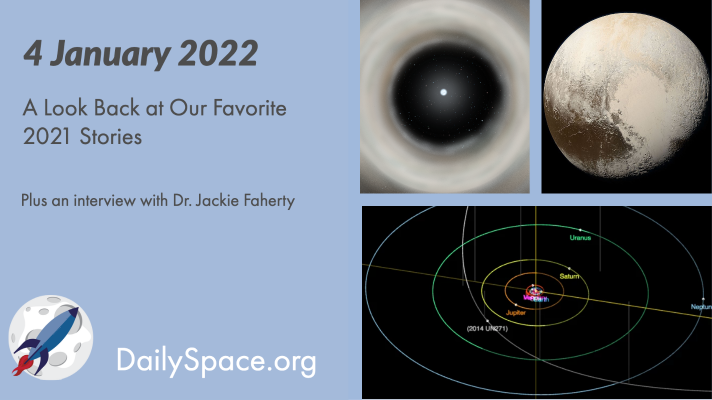
Jan 5, 2022 | Citizen Science, Comets, Daily Space, Exoplanets, Guest Interview, JWST, LPSC, Mars, Pluto & Charon, Supernovae, White Dwarfs
Dr. Pamela and Beth each picked their three favorite stories from 2021, including news from Mars and Pluto and about distant comets and undead white dwarf stars. Plus, we interview Dr. Jackie Faherty from the American Museum of Natural History about citizen science, exoplanets, and JWST.
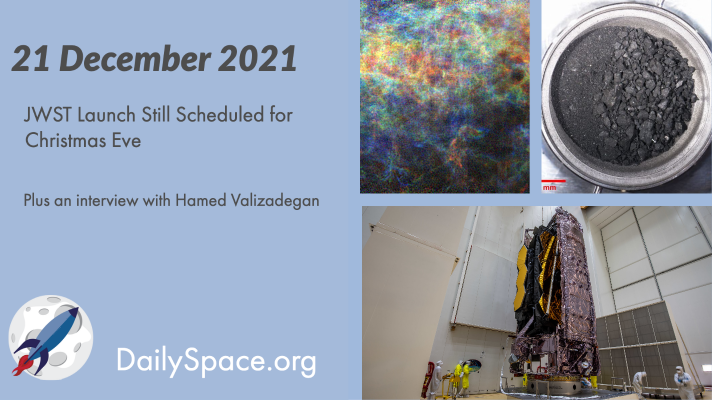
Dec 22, 2021 | Asteroids, Daily Space, ESA, Guest Interview, JAXA, JWST, Kepler, Milky Way, Neutron Stars / Pulsars, Physics
Dr. Pamela takes a deep dive into her feelings about the JWST, its pending launch, and just what the telescope means to the astronomical community. Plus, general relativity is still true, a huge filament of gas in the Milky Way, and we interview Hamed Valizadegan, project lead for ExoMiner.
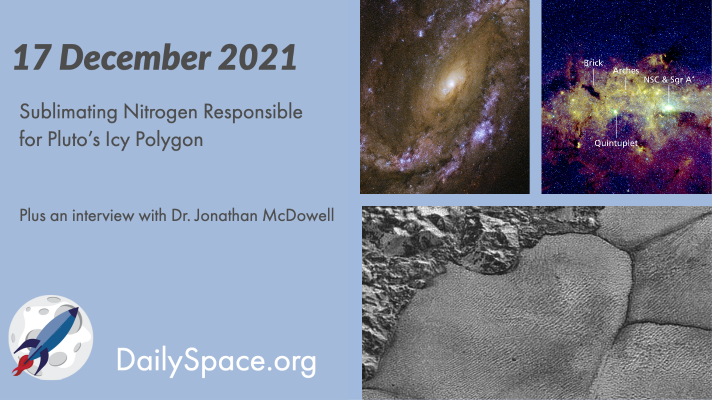
Dec 21, 2021 | Active Galaxies, Daily Space, Guest Interview, Pluto & Charon, Spacecraft, Star Forming Region, Stars, Supermassive Black Holes
New models of sublimating nitrogen show that the process creates enough heat to drive the formation and texture of the polygons in Sputnik Planitia. Plus, black holes, star formation, and an interview with Dr. Jonathan McDowell, orbital police.

Dec 15, 2021 | Active Galaxies, AGU, Asteroids, Daily Space, Exoplanets, Mars, Milky Way, Review, Stars, Supermassive Black Holes
Using the ESO’s Very Large Telescope Interferometer, scientists have obtained the deepest and sharpest images of Sagittarius A*, the black hole at the center of the Milky Way. They tracked the orbits of stars and were able to more precisely measure the mass of the black hole. Plus, new ways to research meteors, and a review of a Peak Design camera anchor system.
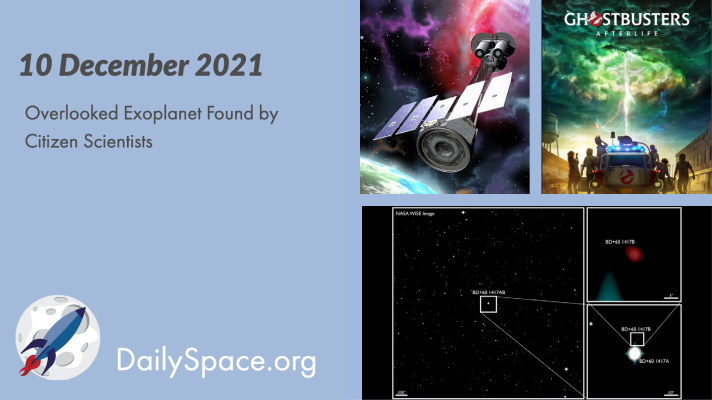
Dec 13, 2021 | Brown Dwarf, Citizen Science, Climate Change, Daily Space, Earth, Exoplanets, Milky Way, Review, Rockets, Spacecraft, SpaceX, Supermassive Black Holes
Using data provided by the Backyard Worlds: Planet 9 citizen science project, volunteers found a possible large planet or brown dwarf orbiting its star at a distance of more than 1,600 astronomical units. Plus, NASA launches the Imaging X-ray Polarimetry Explorer, and we review Ghostbusters: Afterlife.








 We record most shows live, on Twitch. Follow us today to get alerts when we go live.
We record most shows live, on Twitch. Follow us today to get alerts when we go live.